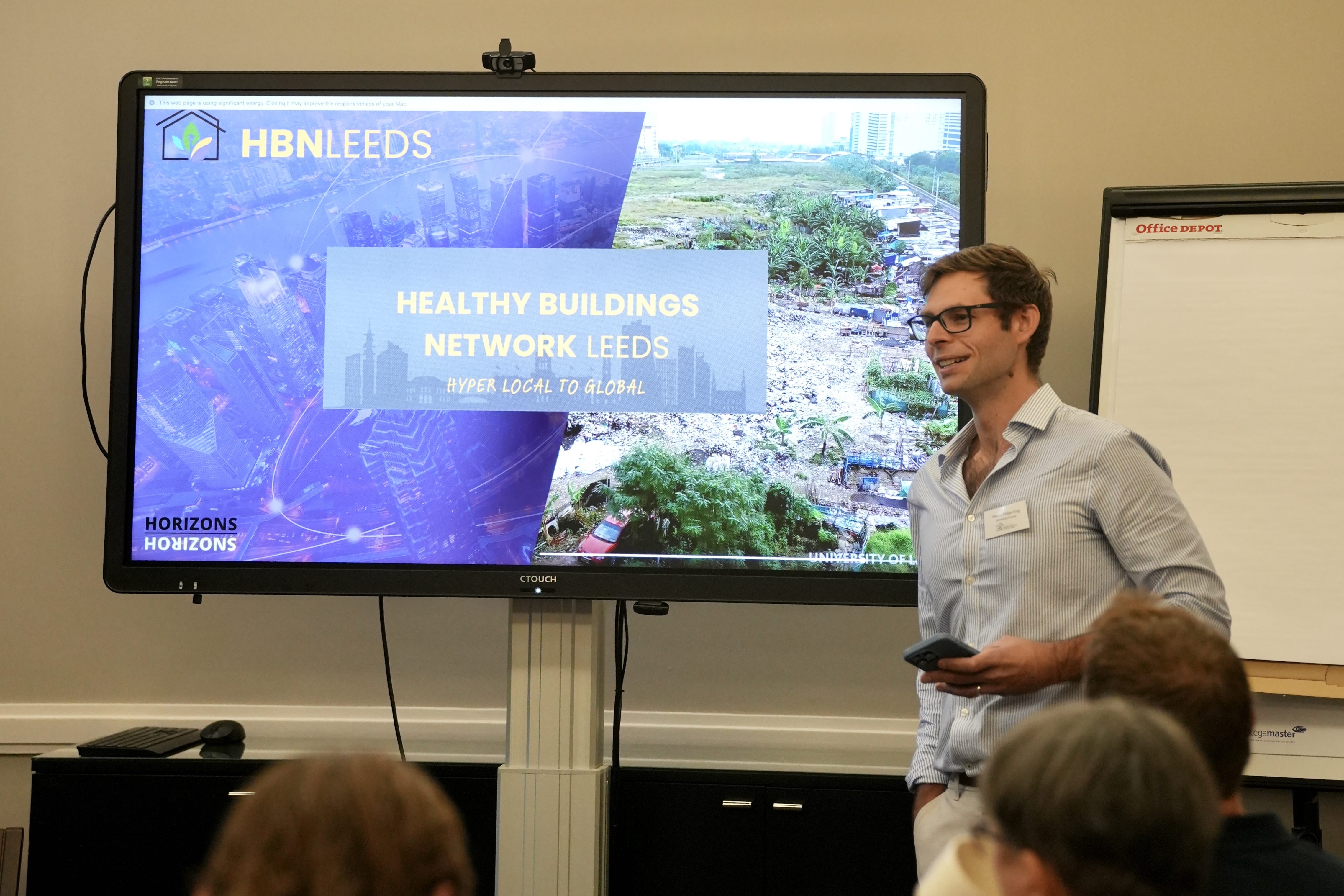Director of Water, Public Health and Environmental Engineering Research Group and co-founder of the Healthy Buildings Network Leeds

Dr. Marco-Felipe King is a co-founder of the Healthy Buildings Network Leeds and Director of the Water, Public Health and Environmental Engineering Research Group at the University of Leeds. With a background in mathematics and fluid dynamics, his research explores the critical intersection of human behaviour, indoor environments, and infection risk. We sat down with him to discuss his journey, research, and vision for creating healthier built environments.
“I started out at Durham University, knee-deep in pure mathematics, where I became fascinated by nature’s hidden patterns—like the Golden Ratio and phyllotaxis. I realised these weren’t just theoretical curiosities; they could inform how we tackle real problems in the world.
That realization took me to Leeds for my master’s in computational fluid dynamics, where I discovered the incredible potential of applying these mathematical principles to infection control. We were looking at how to position UV germicidal lamps so that hospital air could be disinfected more efficiently. From there, I dove into a PhD on modeling infection risk in hospital environments. It’s a genuinely interdisciplinary puzzle: fluid mechanics, human behaviour, and microbiology all rolled into one.”
“The Healthy Buildings Network was born to ensure that academic research genuinely improves public health. Hospital-acquired infections alone cost the UK over a billion pounds every year, and then COVID-19 highlighted how much our indoor spaces matter.
We connect researchers, healthcare professionals, industry partners, and policymakers so that insights don’t stay locked in scientific papers. Projects like the HECOIRA study translate complex modeling data into practical guidance for hospital layout, ventilation, and cleaning. One major question we've addressed is whether single-patient rooms truly reduce infection spread more than multi-bed wards. The outcome can affect millions of pounds in building costs—and potentially save thousands of lives.”
“You can design the most technologically advanced ventilation system, but if human behaviour undermines it—like propping doors open for convenience or skipping hand hygiene—those carefully engineered solutions won't be nearly as effective.
Real buildings are living ecosystems, influenced by how people actually act and move. That’s why we incorporate observed human behaviour patterns into our models. Instead of assuming a perfect scenario, we ask: ‘What’s really happening on the ground?’ It’s a more realistic approach and yields better predictions for infection risk.”
“At the core, I see buildings as dynamic ecosystems where people, microbes, and the built environment intersect. That perspective applies in hospitals, schools, offices—really anywhere humans spend their time indoors.
One major thread is balancing energy efficiency with healthy indoor air quality. As we make buildings more airtight to save energy, pollutants can accumulate. Through projects like the Low Energy Ventilation Network, we explore how to design spaces that conserve energy yet maintain clean, healthy air.
Another connection is the importance of multi-scale thinking. Pathogens operate at microscopic levels, airflow works on a room scale, and human behaviours link entire buildings. We have to consider all these layers to develop truly effective interventions.”
“Computational tools have been a game-changer. Traditional experiments in this area can be prohibitively expensive—or ethically thorny if you’re testing pathogen spread in real hospital settings. CFD lets us simulate complex airflow and contaminant transport in detail, revealing how a single cough might circulate around a ward.
We’ve accelerated those simulations using real-time Lattice Boltzmann methods on GPUs, speeding up the process by factors of 1,000. That opens the door to exploring vast parameter spaces that were off-limits even a few years ago.
Machine learning is equally revolutionary. It helps us map out realistic human behaviour patterns—like how healthcare workers move or how occupants might cluster in different zones. When you combine that with Bayesian statistics and causal inference, you can start pinpointing the actual drivers of infection risk and environmental quality, not just correlations.”
“I’m excited about real-time sensing integrated with computational models—what some call ‘digital twins.’ These virtual replicas can predict outcomes if you tweak ventilation or layout in real buildings.
There’s also growing interest in how our built environment shapes the human microbiome, influencing health in ways we’re only starting to understand.
Then there’s climate adaptation. As weather extremes become the norm, buildings need to shield us from heat waves, wildfire smoke, and other challenges while staying energy-efficient. It’s a complex puzzle, but also a big opportunity for innovation.
Finally, I’m encouraged by how collaborative this field is becoming. Through the Healthy Buildings Network Leeds, we’re bringing together engineers, microbiologists, psychologists, public health experts—everyone who has a part to play. That collective approach is what will truly make buildings healthier.”

The HorUniversity of Leeds
Dr. King leads interdisciplinary research at the intersection of fluid dynamics, infection control, and public health. His work combines advanced computational modeling with real-world applications to create healthier and more sustainable built environments.

Mathematical modeling approaches to infection risk and building health

Updates on our innovative research projects and their impacts

How advanced CFD modeling is transforming healthcare facility design